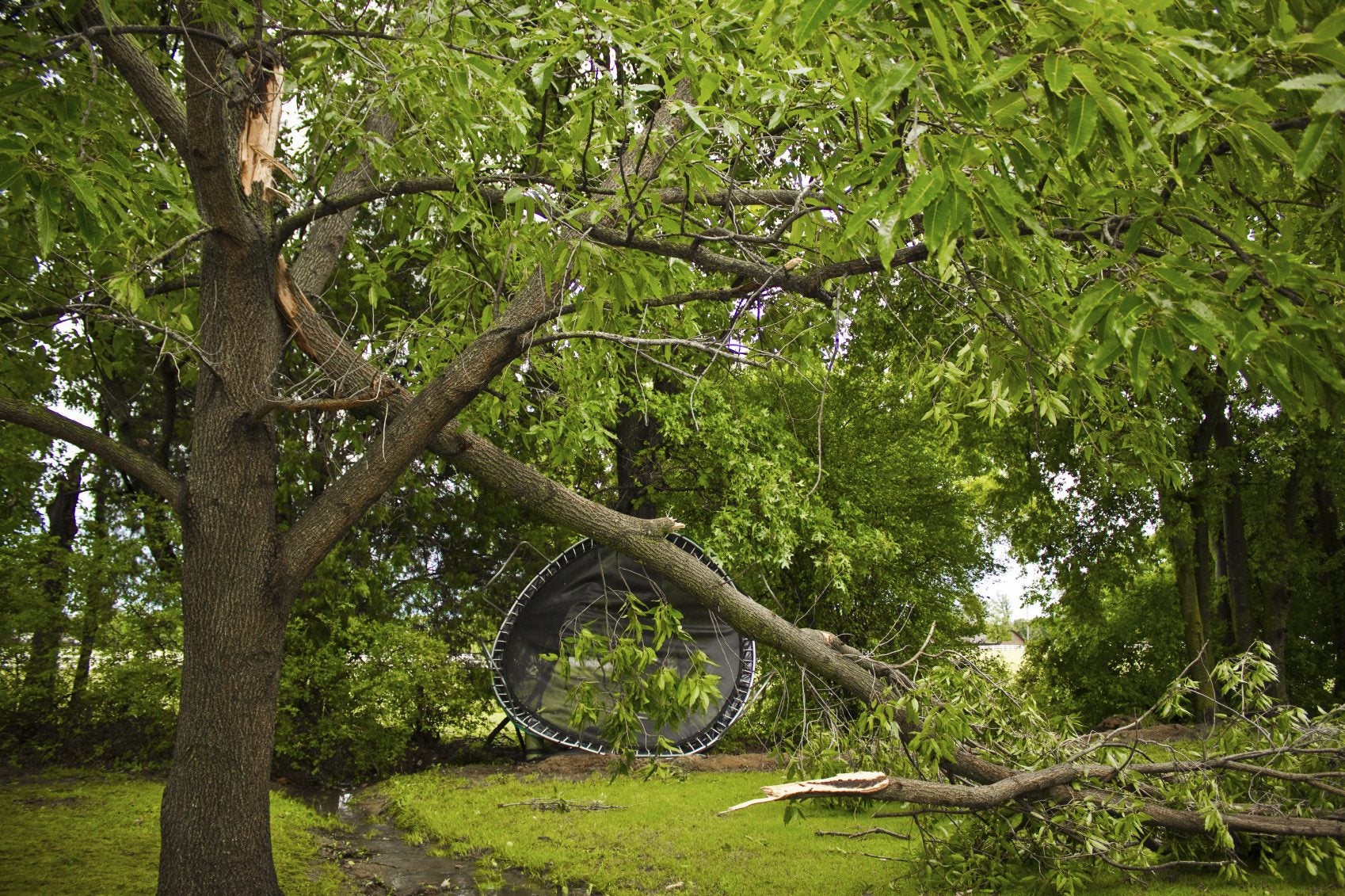Wind Injury To Plants – How To Fix Wind Damaged Plants


Strong winds can damage or kill landscape plants. Dealing with wind damage promptly and properly can improve a plant’s chances of survival, and in many cases, the plant will recover its former graceful glory. Find out about preventing and treating wind damage to plants and trees in this article.
How to Fix Wind Damaged Plants
Garden plants whipped by strong winds often develop torn leaves and broken stems. Prompt pruning helps prevent diseases that enter through ragged breaks and gives the plant a chance to regrow. Snip broken stems below the damage and remove tattered leaves by pinching. When you tackle these tasks right away, the plant recovers quickly and more completely. Trees and woody shrubs with broken branches need special attention. Remove damaged twigs and side shoots back to the main branch. You can shorten main branches to just above a side branch, but shortened branches will never grow any longer. If the remaining branch isn’t long enough to add a graceful shape and character to the tree, it’s best to remove it. Cut the branch back to the collar, or the thickened area next to the trunk.
Preventing Damage from Wind
Plants with a constant stream of wind blowing over them may develop wilted leaves and brown edges from desiccation. The plants may need water, but chances are good that the wind is simply drying the leaves faster than the roots can pull water from the soil. These plants need the protection of a fence or wind tolerant shrubs. Plan your protective barrier carefully to make sure that you block as much wind as possible without casting too much shade. When it comes to trees, pruning is an effective method of preventing damage from the wind. Here are three proven pruning techniques:
- Thin the canopy of the tree so that the wind passes through instead of pushing against the tree. You can accomplish this by removing some of the main branches.
- Raise the crown by removing lower branches.
- Lower the crown by shortening upright branches.
In addition to these methods of reducing the size and density of the crown, remember that branches with a tight crotch angle are more easily broken during periods of strong wind than those with wider angles. Anytime you can anticipate a point of damage, you can prevent property damage and save a tree by taking steps to eliminate the problem.
Gardening tips, videos, info and more delivered right to your inbox!
Sign up for the Gardening Know How newsletter today and receive a free copy of our e-book "How to Grow Delicious Tomatoes".

Jackie Carroll has written over 500 articles for Gardening Know How on a wide range of topics.
-
 Looking For Plants To Give You The Soft And Fuzzies? Try These 5 Fuzzy Leaf Plant Options
Looking For Plants To Give You The Soft And Fuzzies? Try These 5 Fuzzy Leaf Plant OptionsLovers of texture, drama, silver foliage and tactile plants will adore these special sensory garden additions. These fuzzy leaf plant options will leave you all aglow
By Susan Albert
-
 Get Ready For A Summer Of Hummers! Grow These Full Sun Hummingbird Plants and Flowers
Get Ready For A Summer Of Hummers! Grow These Full Sun Hummingbird Plants and FlowersIf you’re lucky enough to enjoy a sunny backyard, make sure you are maxing out on your pollinator opportunities and grow these full sun hummingbird plants and flowers
By Tonya Barnett